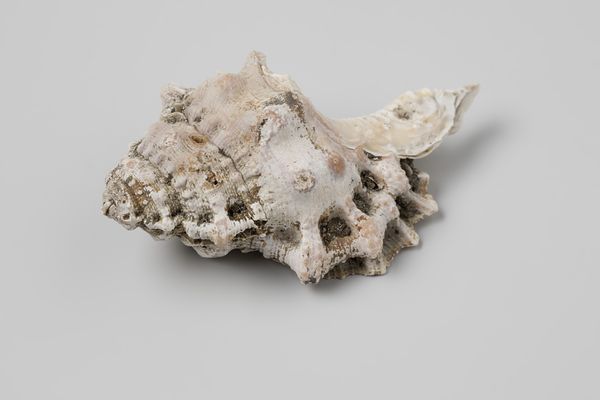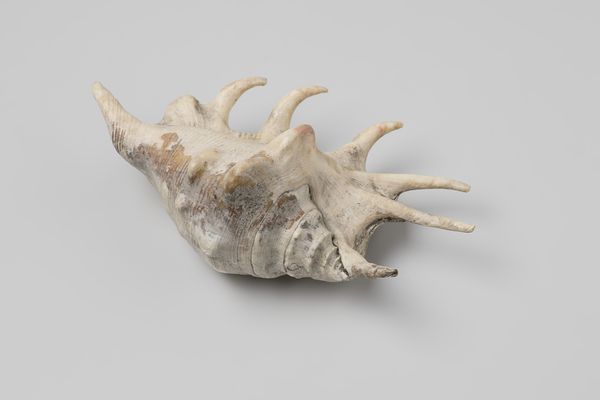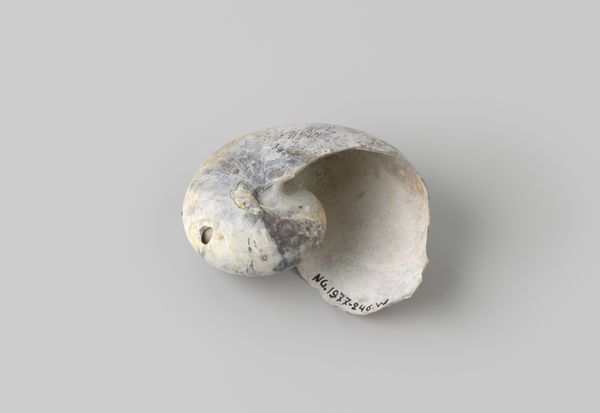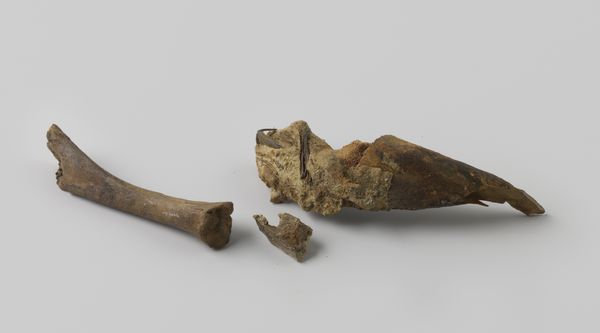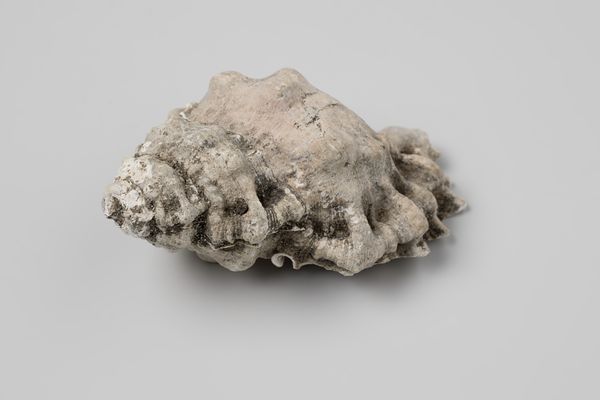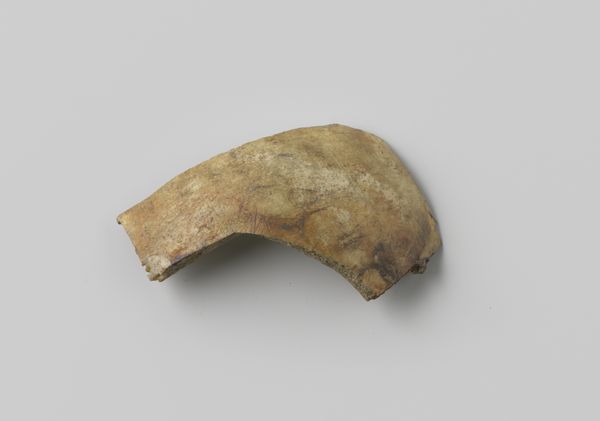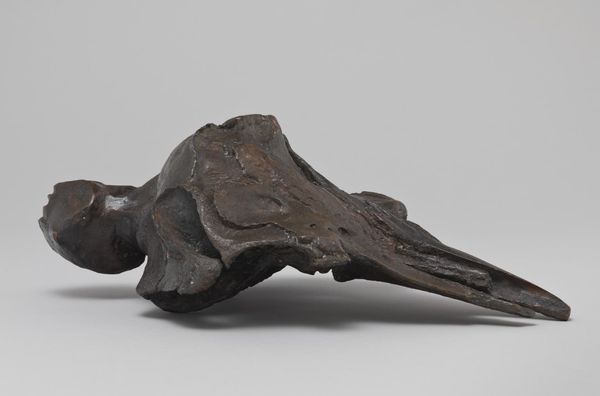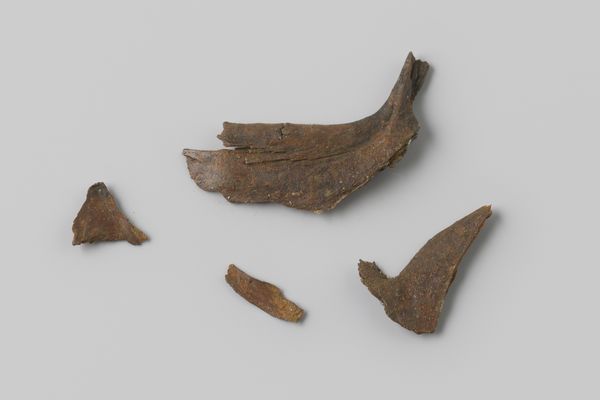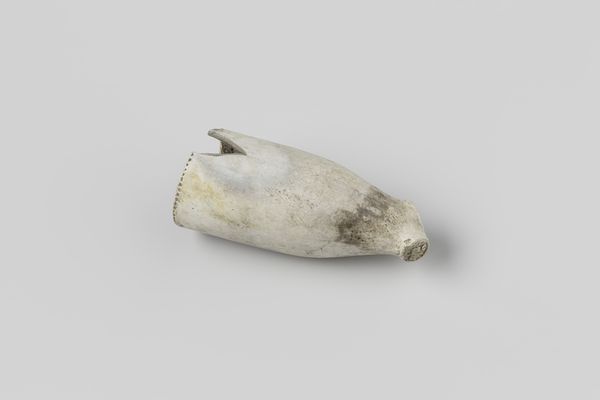
Giant Clam (Tridacna gigas) from the wreck of the Dutch East Indiaman Witte Leeuw before 1613
0:00
0:00
nietvantoepassing
Rijksmuseum
found-object, sculpture
#
organic
#
found-object
#
sculpture
#
prehistoric
Dimensions: height 25 cm, width 61 cm, depth 41 cm
Copyright: Rijks Museum: Open Domain
This is a Giant Clam (Tridacna gigas) shell recovered from the wreck of the Dutch East Indiaman Witte Leeuw. The Witte Leeuw, meaning White Lion, sank in 1613 after a battle with Portuguese ships near St. Helena. This was a time when the Dutch East India Company, a powerful institution, was aggressively expanding its trade routes, often through military force. Items like this clam shell, recovered from shipwrecks, offer insights into the complex social and economic dynamics of the 17th century. They raise questions about colonial trade, maritime conflict, and the global exchange of goods and natural resources. Studying artifacts like this involves researching the history of the Dutch East India Company, analyzing maritime trade routes, and examining accounts of naval battles. What can the shell tell us about our present? Understanding its journey is crucial for understanding the colonial past.
Comments
No comments
Be the first to comment and join the conversation on the ultimate creative platform.

